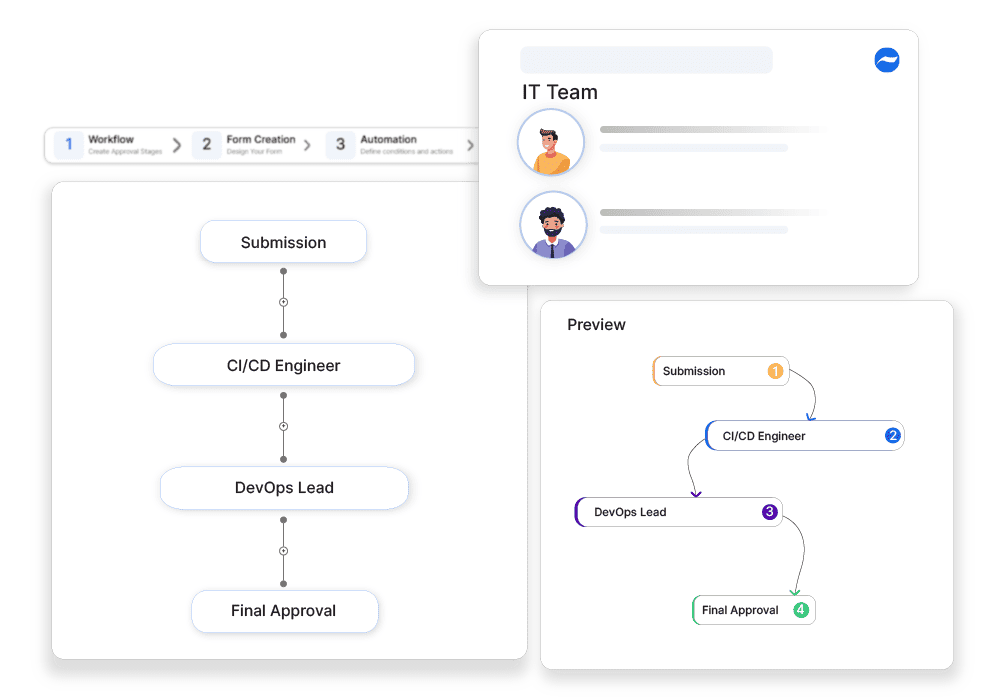Automated Rollback Trigger Setup Process
Automate rollback trigger approvals to ensure proactive failure response.

Why automate?
Automated rollback triggers detect deployment failures and initiate rollbacks to restore stability. However, unapproved rollback triggers may cause unintended reversions, leading to wasted development efforts and unverified fixes. Without structured approvals, teams may configure rollback conditions incorrectly, causing system instability. Manual trigger approvals delay automation setup, reducing the efficiency of rollback mechanisms. Cflow helps to automate Rollback Trigger Setup Approvals, ensuring that all automated rollback conditions are validated, tested, and approved, improving failure response strategies.
How Cflow Helps:
Approval-Based Rollback Trigger Setup
Cflow ensures that all rollback triggers follow structured approvals, preventing unnecessary rollbacks.
Compliance with IT Continuity Policies
Approved rollback triggers align with disaster recovery and incident response plans.
Automated Notifications for Trigger Activations
Cflow sends real-time alerts when rollback triggers activate, improving visibility.
Full Audit Log for Rollback Trigger Events
Cflow records all approved rollback trigger setups, enabling IT teams to analyze performance.
Frequently Asked Questions
What is automated rollback trigger setup?
A workflow to define and automate conditions under which a system will initiate a rollback.
What are the main challenges?
Incorrect trigger conditions, false positives, and rollback failures.
How can it be improved?
By testing rollback logic, using observability tools, and simulating failures.



